City is a settlement which the density of population higher than the national population density. Then, most of community works in non agrarian field. As well as the diverse systems and infrastructure covered by buildings. On the other hand, as we know that Indonesia has 34 provinces with more than 18,000 islands around.
Then, there are several cities which recognized as the largest cities. In addition, the indicator of largest cities based on several factors. Such as areas, population, as well as infrastructure and economic level in city. That’s why, most of them are compete each other to be one of developing cities in Indonesia.
Manado (North Sulawesi) – 410,481 People
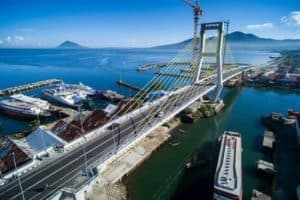 Manado is the capital city of North Sulawesi. Its land area is around 15,726 hectares. Then, Manado is also has a coastline up to 18,7 kilometers. There are hills and mountain ranges. On the other hand, land territory is dominated by a hilly area with the lowland coastal areas around, while water territory includes several islands. Such as Siladen, Bunaken, and Old Manado islands.
Manado is the capital city of North Sulawesi. Its land area is around 15,726 hectares. Then, Manado is also has a coastline up to 18,7 kilometers. There are hills and mountain ranges. On the other hand, land territory is dominated by a hilly area with the lowland coastal areas around, while water territory includes several islands. Such as Siladen, Bunaken, and Old Manado islands.
Both of Bunaken and Siladen have wavy topography with peaks a high as 200 meters. Therefore, Manado city is the second largest city in Sulawesi.
Moreover, it has a population reach 410,481 people. In addition, Manado has a huge potential, especially in economy term. The growth of economy in Manado above six percents during 2015. Its above the national average. That’s why, Manado was selected as the first rank of the top 10 Most Recommended city for Business in 2015 by National Entrepreneurs.
See also:
Yogyakarta (Special Region of Yogyakarta) – 466,313 People
 Yogyakarta city is the capital city of Special Region of Yogyakarta. Then, its only area with status of city than other areas which still become district. Its located in middle of province. On the other hand, Yogyakarta has a narrowest area compared to other districts. Its around 32,5 Kilometers squares which means 1.025% of province with 3,250 hectares.
Yogyakarta city is the capital city of Special Region of Yogyakarta. Then, its only area with status of city than other areas which still become district. Its located in middle of province. On the other hand, Yogyakarta has a narrowest area compared to other districts. Its around 32,5 Kilometers squares which means 1.025% of province with 3,250 hectares.
Meanwhile, status as Special region for Yogyakarta for respect its history. Yogyakarta played an important role especially in period before and after independence.
Moreover, Yogyakarta is one of the cities with a strong cultural element after Bali Island. It has a total of population up to 466,313 people. As well as the growth of natural resources potential which maximized in order to improve the community economy. The purpose is for increasing the contribution in major sector in local revenues as well as an operational reference. Both of economic, social, and tourism aspects.
Solo (Central Java) – 585,486 People
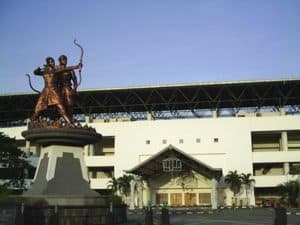 Solo, also known as Surakarta city has 44 kilometers squares of areas. Its recognized as the second largest cities in Central Java after Semarang. Name of Surakarta usually use for government situational while Solo is for cultural aspects in general environment.
Solo, also known as Surakarta city has 44 kilometers squares of areas. Its recognized as the second largest cities in Central Java after Semarang. Name of Surakarta usually use for government situational while Solo is for cultural aspects in general environment.
Its located between Karanganyar and Boyolali regency in East and North, while Sukoharjo regency is in South and West. So, Solo is one of the largest cities in Indonesia.
On the other hand, Solo has a total of population up to 585.486 people have growth in economy aspects. Its recorded more than 5.4 percents above national average. Most of the growth influenced by several public sector. Such as investments and real sector.
Moreover, the increasing of export aspects in various commodities reach higher than a past few years. Its experiencing fluctuating. Solo recorded the highest export with the value of 3,011,6,36 US dollars, while the lowest export is up to 1,33,475 US dollars in a month.
See also:
Pontianak (West Kalimantan) – 598.097 People
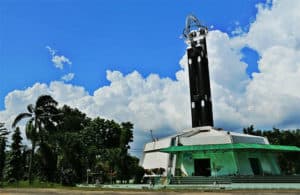 Pontianak is capital city of West Kalimantan. Its become the fourth largest cities after Kuching (Malaysia), Balikpapan, and Banjarmasin. Then, Pontianak located in central of province and make it near with other cities. In general, Pontianak near with Kubu Raya district. According to its topography, Pontianak located in lowest land and passed between Kapuas and Landak rivers.
Pontianak is capital city of West Kalimantan. Its become the fourth largest cities after Kuching (Malaysia), Balikpapan, and Banjarmasin. Then, Pontianak located in central of province and make it near with other cities. In general, Pontianak near with Kubu Raya district. According to its topography, Pontianak located in lowest land and passed between Kapuas and Landak rivers.
On the other hand, Pontianak is one of developing cities among others. Its because the strategist position of Pontianak is available for economy growth in west Indonesia after Batam.
Pontianak with a population up to 598,097 people has a huge potential in several aspects . Such as natural and territorial recources. Its include water, forest, plantation, as well as mining sectors. Then, there are industries such as raw materials management, tourism, and other potential related. Therefore, Pontianak continuously developing to be new center of economy growth.
Kupang (East Nusa Tenggara) – 631,000 People
 Kupang was published in April 25, 1996 as capital city of East Nusa Tenggara. The areas up to 229,97 kilometers squares along with Eltari Airport with 19,69 kilometers squares areas. Then the areas divided into six sub-districts. As well as the population total up to 631,000 people. On the other hand, the economy aspects in Kupang increasingly growth. There are several investments in some aspects. Such as entrepreneurs fields, credit growth, as well as community economic empowerment.
Kupang was published in April 25, 1996 as capital city of East Nusa Tenggara. The areas up to 229,97 kilometers squares along with Eltari Airport with 19,69 kilometers squares areas. Then the areas divided into six sub-districts. As well as the population total up to 631,000 people. On the other hand, the economy aspects in Kupang increasingly growth. There are several investments in some aspects. Such as entrepreneurs fields, credit growth, as well as community economic empowerment.
There is up to 7.28 percents for economy growth in 2015. Its higher than city average up to 5.17 percents and national average reach 4.79 percents.
Moreover, Non-government group is the main contributor to the economic growth because they open an access to employment services. That’s why the citizens can get a proper job. While, poverty rate in Kupang decreases up to 6.44 percent in 2015 from 8.93 percent in 2014.
See also:
Banjarmasin (South Kalimantan) – 675,440 People
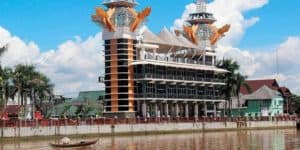 As well as Pontianak, Banjarmasin is capital city of South Kalimantan. Its the largest and populous city in Kalimantan. As well as the populous city in outer Java island. Then, Banjarmasin also popular with “a thousand river city” has 72 kilometers squares which as delta region with 25 small islands. The Islands such as Tatas, Kelayan, Rantauan Keliling are separated by several rivers. Banjarmasin has up to 675,440 people with per region has population average up to 9,381 people.
As well as Pontianak, Banjarmasin is capital city of South Kalimantan. Its the largest and populous city in Kalimantan. As well as the populous city in outer Java island. Then, Banjarmasin also popular with “a thousand river city” has 72 kilometers squares which as delta region with 25 small islands. The Islands such as Tatas, Kelayan, Rantauan Keliling are separated by several rivers. Banjarmasin has up to 675,440 people with per region has population average up to 9,381 people.
On the other hand, the developing of Banjarmasin focus on five aspects. Such as government, commerce, harbor, local industries, and tourism.Then, Barito river is one of central place especially in commerce aspects. Therefore, floating market in Banjarmasin as main focus for economy growth in community as well as city. Its use for increase the national average.
Denpasar (Bali) – 660,000 People
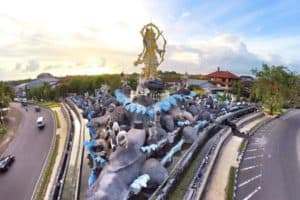 Denpasar city is located in the middle of the Bali island. The topography is generally skewed towards the south with a height ranging from 0-75m above the sea level. Then, the total area is reach 127,78 kilometers squares. As well as the total population up to 660,000 people. On the other hand, Denpasar as capital city of Bali, becomes a center of several aspects. Such as government, education, and economy.
Denpasar city is located in the middle of the Bali island. The topography is generally skewed towards the south with a height ranging from 0-75m above the sea level. Then, the total area is reach 127,78 kilometers squares. As well as the total population up to 660,000 people. On the other hand, Denpasar as capital city of Bali, becomes a center of several aspects. Such as government, education, and economy.
Those are because Denpasar has a strategic location which very advantageous both in economy and tourism terms and worthy to do various activities.
In addition, the development of economy growth based on agricultural and marine aspects. Agribusiness aspects support the wisdom of food security, optimize the utilization of the resource potential both inland fisheries and marine fisheries. As well as and the utilization of the coast for marine aquaculture. Moreover, the implementation of the program intensification and diversification of farming applied.
Balikpapan (East Kalimantan) – 713,323 People
 Its located in East Kalimantan with 94,6 kilometers squares area. Then, the topography consists of 85 percents in hilly terrain and only about 15% are in flat areas. Its situated in narrow and coastal areas as well as between the hills.
Its located in East Kalimantan with 94,6 kilometers squares area. Then, the topography consists of 85 percents in hilly terrain and only about 15% are in flat areas. Its situated in narrow and coastal areas as well as between the hills.
In addition, Balikpapan also has 19 rivers. These river have an important role as well as a source of raw water requirement for drinking water and transportation. Meanwhile, the population reaches 713,323 people.
On the other hand, Balikpapan is a gate for Eastern Indonesia region. Its potential as a services city. Then, its characterized by the presence of several aspects. Such as International airports, Sea sports, as well as regional feeder port compared to other areas in Kalimantan and even in Eastern Indonesia region. Moreover, Balikpapan has its own commodity produced in every districts. Whether from agriculture and industry sectors which utilize raw materials of agricultural products.
Samarinda (East Kalimantan) – 754,784 People
 Samarinda is capital city of East Kalimantan near of Kutai Kartanegara district. Judging from the line height, Samarinda has a topography tends to be flat and located in lowlands. Its split by the Mahakam River. As well as based on elevation and geographic size, it shows that 42,77 percents land area is located at height up to 7-25 meters above sea level. Then, Samarinda city has a population up to 754,784 people.
Samarinda is capital city of East Kalimantan near of Kutai Kartanegara district. Judging from the line height, Samarinda has a topography tends to be flat and located in lowlands. Its split by the Mahakam River. As well as based on elevation and geographic size, it shows that 42,77 percents land area is located at height up to 7-25 meters above sea level. Then, Samarinda city has a population up to 754,784 people.
On the other hand, as the capital city of East Kalimantan province, Samarinda experienced development activities and urban functions. Moreover, it becomes one of the central economic growth for all activities in East region.
In addition, the improvement in coal prices gradually reach up to 1,4 million per ton. As well as the increasing of demand from China is a good signal for the economy in East Kalimantan.
Pekanbaru (Riau) – 850,000 People
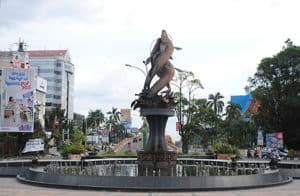 Pekanbaru is the largest city as well as capital city in Riau province. Then, Minangkabau tribe is the largest ethnic communities with a total of about 37.7% of the entire population with a total of population reaches 850,000 people. According the geography, Pekanbaru has a strategic position to be in the traffic lane for East of Sumatra. The city is connected to several cities such as Medan, Padang and Jambi.
Pekanbaru is the largest city as well as capital city in Riau province. Then, Minangkabau tribe is the largest ethnic communities with a total of about 37.7% of the entire population with a total of population reaches 850,000 people. According the geography, Pekanbaru has a strategic position to be in the traffic lane for East of Sumatra. The city is connected to several cities such as Medan, Padang and Jambi.
Then, Pekanbaru is in the Siak river with a height ranging from 5-50 meters above sea level. In addition, the city has a tropical climate.
In addition, Pekanbaru also as populous city compare other cities in Riau. Most of Minangkabau communities generally become a trader and introducing Minang language as their language instead of Malay or Indonesian. On the other hand, Chinese community also run the developing growth of economy sectors. Several large estates and export-import are developed by them. Then, trade and services are now a mainstay for the city. Its can be seen in the proliferation of development street markets on the main streets of this city.
See also:
Malang (East Java) – 887,443 People
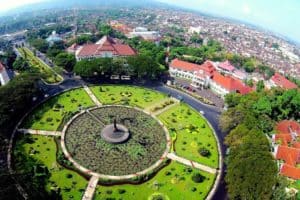 Malang is one of the autonomous region and the second largest city in East Java after Surabaya. It located at an altitude between 440-667 meters above sea level. Then, Malang consists of 5 sub-districts. Such as Klojen, Blimbing, Lowokwaru, Kedungkandang, and Sukun.
Malang is one of the autonomous region and the second largest city in East Java after Surabaya. It located at an altitude between 440-667 meters above sea level. Then, Malang consists of 5 sub-districts. Such as Klojen, Blimbing, Lowokwaru, Kedungkandang, and Sukun.
On the other hand, Its have an fresh air with an average temperature of 24.13 ° Celsius. The population of the city reaches 887,443 and expected will be increase in next year. Meanwhile, its economy growth depends by several factors.
Such as agriculture, mining and quarrying, manufacturing, electricity, gas and water supply, construction, and commerce. As well as hotels and restaurants, transport and communications, finance, and services. That’s why every sectors contributed for economy growth development. In addition, other every sectors which most contributed is industries.
Bandar Lampung (Sumatra) – 820,514 People
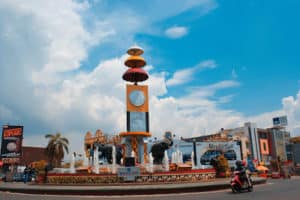 Bandar Lampung is capital city of Lampung, Sumatra island. Then, Its the gateway to the island of Sumatra. It located about 165 km northwest of Jakarta. This city has an area of 197.22 kilometers squares which divided into 13 districts with a population of 820.514 people.
Bandar Lampung is capital city of Lampung, Sumatra island. Then, Its the gateway to the island of Sumatra. It located about 165 km northwest of Jakarta. This city has an area of 197.22 kilometers squares which divided into 13 districts with a population of 820.514 people.
On the other hand, the economy growth in Lampung increased in 2016 up to 5.19 percents. The growth comes from production sectors. While, the highest growth is the electricity and gas sector (23.69%), followed by information and communications (10.78%), construction (8.77%), education services (8.65%), financial services (8.63%), as well as transportation and warehousing (8.23%).
In addition, at expenditure terms, the highest growth came from household consumption (5.60%), Non-household consumption (4.38%), and gross domestic capital formation (4.21%).
See also: Luwak coffee
Padang (West Sumatra) – 902,000 People
 Padang city located in west coast of Sumatra island. A total area of Padang city is 694,96 kilometers squares and equivalent to 1.65% of the area of West Sumatra province. More than 60% area covered by hilly area with protected forests, while the rest is effective urban areas. Then, Padang city has a coastline of 84 km and a small island about 19 pieces.
Padang city located in west coast of Sumatra island. A total area of Padang city is 694,96 kilometers squares and equivalent to 1.65% of the area of West Sumatra province. More than 60% area covered by hilly area with protected forests, while the rest is effective urban areas. Then, Padang city has a coastline of 84 km and a small island about 19 pieces.
On the other hand, based on the results of BPS released in 2016, the population of the city of Padang about 902,000 people. Its increased by as much as 80 thousand people when compared with the results of the data collection in 2014 that only around 822 000 people.
In addition, the economy growth of city increase in every year an average of 0.20 percent since 2011. This economic improvement is due to two things are port activity and number of flights of Minangkabau International Airport.
See also: Most Beautiful Fabric in Indonesia
Batam (Riau) – 1,5,000,000 People
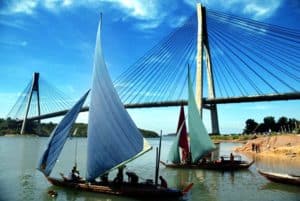 The city is a part of Riau province with a land area of 715 killometers squares, or about 115 percents of Singapore territory with total area up to 1,570,35 kilometers squares. Batam has tropical climate with average temperatures of 26 to 34 degrees celsius. Its has a hilly terrain and valley. When it was built in the early 1970s the city was only 6,000 people, and in December 2008 reached up to 882,ooo people.
The city is a part of Riau province with a land area of 715 killometers squares, or about 115 percents of Singapore territory with total area up to 1,570,35 kilometers squares. Batam has tropical climate with average temperatures of 26 to 34 degrees celsius. Its has a hilly terrain and valley. When it was built in the early 1970s the city was only 6,000 people, and in December 2008 reached up to 882,ooo people.
In 2016, its reaches 1,5 million people. On the other hand, the growth of economy increased in household consumption as well as investment sectors.
Thus there are to many central infrastructure such as the construction of flyovers and highway construction. As well as the development of Batu Ampar Port and Hang Nadim Airport. Moreover, in next years, there are economy growth in tourism fields. So, its expected to be one of largest cities in Riau province.
See also: Indonesian traditional transportation
Palembang (South Sumatra) – 1,558,494 People
 Geographically, Palembang located at altitude of 2 ° 59’27.99 and longitude of 104 ° 45’24.24. Its area up to 102.47 km ² with an average height of 8 meters above sea level. Then, the location of Palembang is strategic. Thus it passed by a road connecting between regions in West Sumatra. In addtition, Palembang also has the Musi River, which is crossed by the Ampera Bridge, which serves as a means of transport and trade between regions. On the other hand, in 2012, the population of the city of Palembang already touched 1,503,485 people. While, in 2013 increased to 1,535. 900, 1,558,494 people in 2014, then its reached 1,558,491 people in 2015.
Geographically, Palembang located at altitude of 2 ° 59’27.99 and longitude of 104 ° 45’24.24. Its area up to 102.47 km ² with an average height of 8 meters above sea level. Then, the location of Palembang is strategic. Thus it passed by a road connecting between regions in West Sumatra. In addtition, Palembang also has the Musi River, which is crossed by the Ampera Bridge, which serves as a means of transport and trade between regions. On the other hand, in 2012, the population of the city of Palembang already touched 1,503,485 people. While, in 2013 increased to 1,535. 900, 1,558,494 people in 2014, then its reached 1,558,491 people in 2015.
Meanwhile, several sectors has controlled economic growth in South Sumatra. Such as construction sector and government spending. As well as there are four major projects preparation for the 2018 Asian Games like the construction of double track railway.
Semarang (Central Java) – 1,634,482 People
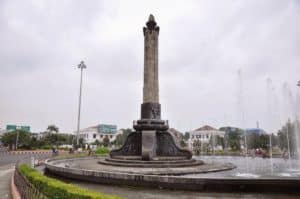 Semarang city has an area up to 373.70 kilometers squares. Administratively, Semarang divided into 16 subdistricts and 177 villages. Of the 16 existing sub-district, there are 2 sub-district which has the largest area. There are Mijen the District, with an area of 57.55 km2 and the District Gunungpati, with an area of 54.11 km2. Then, the second sub-district located in the southern covered hilly and caves.
Semarang city has an area up to 373.70 kilometers squares. Administratively, Semarang divided into 16 subdistricts and 177 villages. Of the 16 existing sub-district, there are 2 sub-district which has the largest area. There are Mijen the District, with an area of 57.55 km2 and the District Gunungpati, with an area of 54.11 km2. Then, the second sub-district located in the southern covered hilly and caves.
However, its still have the potential of agriculture and plantation. In 2015, the population in the city of Semarang reached 1,634,482 people.
Meanwhile, the economy growth of Semarang boosted by the volume of consumption of goods and services up to 102.55%. As well as low inflation also contributed to the level of the consumer economy. On the other hand, there are several factors which encourage the presence of optimistic consumers to increase household incomes marked by the magnitude of index 113.39 percents.
Makassar (South Sulawesi) – 1,7,000,000 People
 Makassar is capital city of South Sulawesi. It located between 119 degrees longitude and 5.8 degrees latitude. Then, the position of Makassar is near Makassar strait in west, Pangkajene Island in north, Maros regency in the east and in Gowa regency in the south. Its area up to 175.77 kilometers squares and divided into fourteen districts. The population reaches 1,7,000,000 in 2015. Meanwhile, many ethnic groups living here. Such as Makassar, Bugis, Toraja and Mandar tribes. As well as Chinese community.
Makassar is capital city of South Sulawesi. It located between 119 degrees longitude and 5.8 degrees latitude. Then, the position of Makassar is near Makassar strait in west, Pangkajene Island in north, Maros regency in the east and in Gowa regency in the south. Its area up to 175.77 kilometers squares and divided into fourteen districts. The population reaches 1,7,000,000 in 2015. Meanwhile, many ethnic groups living here. Such as Makassar, Bugis, Toraja and Mandar tribes. As well as Chinese community.
On the other hand, Makassar City trading quite advanced. The centers of commerce is in traditional markets, wholesale markets to modern shopping malls, and air-flower rapidly. As a major contributor, the sector is able to absorb market employment up to 904 644 people. Its reaches 34.24 percent of the working age population. While, in the industrial sector, there is a wide range of processing industries in the city.
Tangerang (Banten) – 1.803.911 People
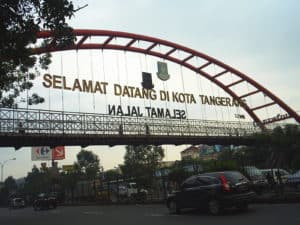 Tangerang city is located near Teluk Naga and Sepatan District in Tangerang regency. In south, there sub-district Serpong, while in west is Cikupa district. Then, the position of Tangerang is quitely strategic. Its between capital city of Jakarta and Banten province.
Tangerang city is located near Teluk Naga and Sepatan District in Tangerang regency. In south, there sub-district Serpong, while in west is Cikupa district. Then, the position of Tangerang is quitely strategic. Its between capital city of Jakarta and Banten province.
In addition, in accordance with with Presidential Decree No. 13 of 1976 on Development, Tangerang city is one of the buffer zone of Capital city.
Then, it has population up to 1,803,911 people and expected will be increase in next years. Thus there are economic growth in several aspects of Tangerang city.
Meanwhile, in terms of economic capacity, the urban sector in the region has been growing rapidly, fueled by economic growth in Jakarta, especially South Jakarta. Development of south Tangerang increase rapidly. Especially in several factors such as trade, services and housing. Serpong district is one of developing district with so much high quality facilities and infrastructure development.
See also:
Medan (North Sumatra) – 2.210.624 people
 Medan city has an area of 26.510 hectares or .6% of the total area in North Sumatra. Thus, compared to the other districts, Medan has an area that is relatively small with a population that is relatively large. In addition, as a suburb of the Malacca Strait shipping lane, Medan has a strategic position as a gateway (entrance). Its useful for trading of goods and services, both domestic and foreign trade (export-import).
Medan city has an area of 26.510 hectares or .6% of the total area in North Sumatra. Thus, compared to the other districts, Medan has an area that is relatively small with a population that is relatively large. In addition, as a suburb of the Malacca Strait shipping lane, Medan has a strategic position as a gateway (entrance). Its useful for trading of goods and services, both domestic and foreign trade (export-import).
Then, the Geographical position of this field have been encouraging developments of economy growth. In addition, the population growth up to 2,210,624 people in few past years.
On the other hand, the city of Medan has 21 districts and 151 villages. These fields full of characteristics, ethnicity, religion and cultures. So, it has the potential to be used as opportunities and strengths in implementing development in various fields.
See also: Indonesian cultures
Bandung (West Java) – 2.378.627 People
 Bandung is is located at coordinates 107 ° longitude and 6 ° 55 ‘South Latitude. Its area up to 16,767 hectares. Geographically, its located in the middle of West Java province, thus, the provincial capital, Bandung has a strategic value to the surrounding areas. Then, Bandung is also surrounded by mountains and flowing major rivers such as the River Cikapundung. Nowadays, Bandung is the third largest city in Indonesia after Jakarta and Surabaya. Bandung is also the only capital city in the province of Indonesia, located away from the beach, or are in hinterland.
Bandung is is located at coordinates 107 ° longitude and 6 ° 55 ‘South Latitude. Its area up to 16,767 hectares. Geographically, its located in the middle of West Java province, thus, the provincial capital, Bandung has a strategic value to the surrounding areas. Then, Bandung is also surrounded by mountains and flowing major rivers such as the River Cikapundung. Nowadays, Bandung is the third largest city in Indonesia after Jakarta and Surabaya. Bandung is also the only capital city in the province of Indonesia, located away from the beach, or are in hinterland.
On the other hand, as the capital city of West Java province, with a population of 2,378,627 people, Bandung has an important role in the growth sectors of the economy. There are an increase in the areas of governance, economic, social, and cultural. Moreover, the prestige of Bandung in the national scale increasingly in several aspects.
Surabaya (East Java) – 2.765.487 People
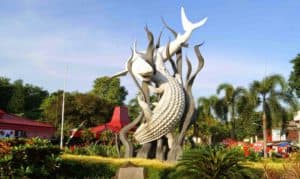 Surabaya city is the capital of East province. It lies on the edge of the northern coast of East Java province, between 7 ° 9′- 7 ° 21 ‘ South latitude and 112 ° 36′ – 112 ° 54’ East longitude. Its near Madura Strait in North and East, then Sidoarjo district in South as well as Gresik in West. Then, Surabaya has an area up to 52,087 hectares. There are a land area of 33,048 hectares, or 63.45%, and the sea area of 19,039 hectares, or 36.55 percents. Meanwhile, the topography of Surabaya is 80% in lowlands, with a height of 3-6 meters above sea level.
Surabaya city is the capital of East province. It lies on the edge of the northern coast of East Java province, between 7 ° 9′- 7 ° 21 ‘ South latitude and 112 ° 36′ – 112 ° 54’ East longitude. Its near Madura Strait in North and East, then Sidoarjo district in South as well as Gresik in West. Then, Surabaya has an area up to 52,087 hectares. There are a land area of 33,048 hectares, or 63.45%, and the sea area of 19,039 hectares, or 36.55 percents. Meanwhile, the topography of Surabaya is 80% in lowlands, with a height of 3-6 meters above sea level.
The number of residents in the city of Surabaya amounted to 2,765,487 people. On the other hand, Surabaya city itself is a center of business, commerce, industry, and education. Moreover, Surabaya also offer a prosperous way of living.
Surabaya has its own charm to attracts newcomer to come. Most of them migrate with the intention of studying, starting a business, looking for work, and so forth. Then, there are at least three major components of economic support in Surabaya. Namely, trade, hotels and restaurants and transport / transport. All three are very dominant to support economic growth in Surabaya city.
Jakarta (DKI Jakarta) – 10,170,000 People
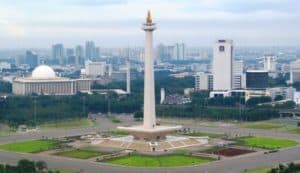 Jakarta is one and only city with a province status. Its located in the northwestern part of Java Island. Then, Jakarta has an area of approximately 661.52 square kilometers with a population of 10,170,000 people. Even its expected to reach 16 million people in 2020. Moreover, the metropolitan area of Jakarta is the largest metropolis in Southeast Asia and second in the world. On the other hand, As a center of business, politics, and culture, Jakarta is home to the head offices of state-owned enterprises, private enterprises and foreign companies.
Jakarta is one and only city with a province status. Its located in the northwestern part of Java Island. Then, Jakarta has an area of approximately 661.52 square kilometers with a population of 10,170,000 people. Even its expected to reach 16 million people in 2020. Moreover, the metropolitan area of Jakarta is the largest metropolis in Southeast Asia and second in the world. On the other hand, As a center of business, politics, and culture, Jakarta is home to the head offices of state-owned enterprises, private enterprises and foreign companies.
As well as the seat of the government agencies and the ASEAN secretariat office. There are two airports, namely Soekarno-Hatta and Halim Perdanakusuma Airport, as well as a sea port at Tanjung Priok.
In addition, In the midst of global economic goes slowdown, the economic growth in Jakarta grew steadily in 2016. Thus economic growth was driven by the improvement in household consumption. Its continuing to purchase purchasing power sustained by controlled inflation. Mewanhile, improving national economic growth was also driven by natural resource producing areas and consumption of Non-Public. Then, from the field of business, improvement in consumption helped boost the growth of trade, information and telecommunications, transportation. As well as warehousing even corporate services.
See also:
Indonesia as developing country always survive to make a better economic growth in several beneficial aspects. Such as industries, commerce, plantation, maritime, as well as producing origin products. So, it can help to reduce amount of Poverty in Indonesia, as well as in order to be one of developed countries in the world. Therefore, Indonesia not only known as country which so many population but also known as country which has many developing people in all cities.
[accordion]
[toggle title=”Other Indonesia Facts”]
- Indonesian People
- Indonesia Jamu
- Indonesian Heritage
- Dayak Tribe
- Indonesian Martial Arts
- Indonesian Education System
- Indonesian Traditional Transportation
- Indonesia Military Power
- Indonesian Women Rights
- Indonesia Language
- Gamelan Facts
- Indonesian Landmarks
- Bali Tribes
- Indonesian Cultures
- Indonesian Politics
- Indonesian Democracy
- Indonesian Tea
- Indonesian Heroes
- Balinese Dance
- Indonesian Lifestyle
[/toggle]
[/accordion]
